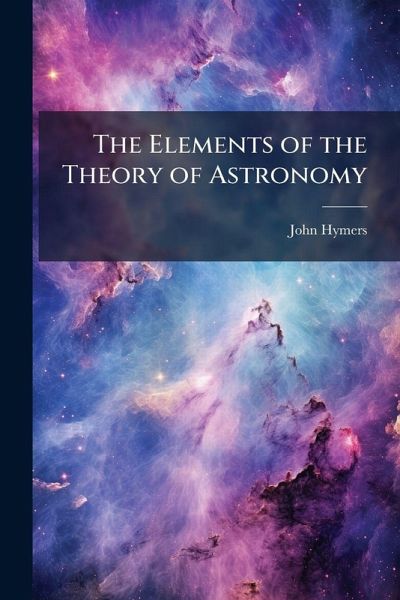
The Elements of the Theory of Astronomy
Versandkostenfrei!
Versandfertig in über 4 Wochen
23,99 €
inkl. MwSt.
Weitere Ausgaben:

PAYBACK Punkte
12 °P sammeln!
"The Elements of the Theory of Astronomy" by John Hymers, originally published in 1840, provides a comprehensive introduction to the principles of astronomy. This classic text covers essential topics such as the motion of celestial bodies, planetary orbits, and the mathematical foundations of astronomical calculations. Intended for students and enthusiasts alike, the book offers a detailed exploration of the methods used to understand and predict astronomical phenomena. Hymers's work reflects the state of astronomical knowledge in the mid-19th century, making it a valuable resource for those i...
"The Elements of the Theory of Astronomy" by John Hymers, originally published in 1840, provides a comprehensive introduction to the principles of astronomy. This classic text covers essential topics such as the motion of celestial bodies, planetary orbits, and the mathematical foundations of astronomical calculations. Intended for students and enthusiasts alike, the book offers a detailed exploration of the methods used to understand and predict astronomical phenomena. Hymers's work reflects the state of astronomical knowledge in the mid-19th century, making it a valuable resource for those interested in the history of science and the development of astronomical theory. It remains a significant contribution to the field, offering insights into the historical context of modern astronomy. This work has been selected by scholars as being culturally important, and is part of the knowledge base of civilization as we know it. This work was reproduced from the original artifact, and remains as true to the original work as possible. Therefore, you will see the original copyright references, library stamps (as most of these works have been housed in our most important libraries around the world), and other notations in the work. This work is in the public domain in the United States of America, and possibly other nations. Within the United States, you may freely copy and distribute this work, as no entity (individual or corporate) has a copyright on the body of the work. As a reproduction of a historical artifact, this work may contain missing or blurred pages, poor pictures, errant marks, etc. Scholars believe, and we concur, that this work is important enough to be preserved, reproduced, and made generally available to the public. We appreciate your support of the preservation process, and thank you for being an important part of keeping this knowledge alive and relevant.


